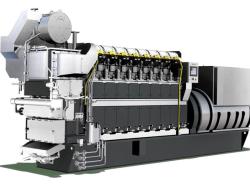
OR WAIT null SECS
© 2024 MJH Life Sciences™ and Turbomachinery Magazine. All rights reserved.
Dry gas seals: Problems and solutions
Common dry gas seal failures are discussed below along with their causes and remedies. This is from a case study by
Rajmal Majhi and Riccardo Schiappacasse of GE Oil & Gas Global Services Engineering presented at the first Middle East Turbomachinery Symposium (Feb. 14-16) in Qatar.
* Inadequate fuel gas pressure during start up
Typical conditions on inboard/outboard seal will include running marking on the seal and running/scoring marking on the face
* Main buffer (fuel) gas is provided in the seal gas line if the compressor discharge pressure is high enough or the process gas is not suitable to use as seal gas.
Insufficient pressure of the buffer gas during startup can cause the process gas inside the compressor to go through dry seal faces.
Exposure to the dirty gases will make the dry gas seal groove ineffective causing the damage to the seal faces.
Recommendations
1.Seal/Buffer gas pressure > Max process gas pressure
2. Introduce a startup interlock
* Failure of oil traps on the barrier seal
The oil traps are provided in the drain of the buffer gas line to trap and drain the oil that could come into the barrier seal zone.
Failure of the trap will alter the pressure in the barrier seal zone. This leads to ineffectiveness of the barrier seals. If foil is present in the barrier seal for an elongated period of time, the seals will eventually fail.
Recommendations
1.Periodically check the functionality of the oil traps
2.If the PCV upstream of the barrier seals are not able to maintain the pressure on the barrier seals, check the functionality of the oil traps.
* Inadequate supply pressure of air/nitrogen into the seals
This can happen due to the failure of O-rings or carbon rings on the barrier seals, failure of the PCV, malfunctioning of the drain traps on the barrier seals.
Inadequate air/N2 pressure at the tertiary seals can potentially allow lube oil carry over or process gas contamination
Recommendations include paying extra attention when replacing the barrier seals so as not to damage the O-ring, checking the trends of the barrier seal header pressure, and checking the functionality of the PCV.
* Presence of heavy hydrocarbons in the seal gas beyond design specs
Seal gas super heating is required to avoid formation of the mixed phase (liquid/gas).
Mixed phase of the gas in the seal face and seat area will reduce its effectiveness and can potentially damage the seals. Presence of heavy hydrocarbons (not envisaged during design) can reduce super heating effectiveness.
Recommendations
Check the composition of the gas being handled by the compressor and compare with the design gas composition. Look for heavier hydrocarbon (C6+) and analyze if the design of the seal gas superheating has been considered for all the gases. If not, change the superheating temperature.
* Open rupture disc on the bypass of the primary vent PDT.
Opening of the rupture disc will indicate lower reading of the PDI on the primary vent.
Lower PDI
readings may indicate possible seal failure. Misleading information may lead operators to unnecessarily replace the seals.
Recommendations
1 Check the trends of the PDI on the valve on the primary vent
2.Check the flow meter reading on the primary vent
3.Investigate when the problem arose (if after any seal replacement or any trip event)
4.Measure the temperature just downstream of the rupture disc
5.Analyse the results of the above to reach the conclusion
* High process gas concentration systems on secondary vent
In compressors where the secondary vent is provided with a trip on high gas concentrations, there is a possibility of spurious trips at the range of the gas concentration is not predictable.
The system relies on a catalyst
This protection function is normally not recommended. However, it can be used for monitoring purposes.
Recommendations
Frequently check the system calibrations and compare system readings with lab analysis results.
If the results are not matching, consider installing flow meters instead.
* Inappropriate slow roll speed.
Slow rolls are normally required to minimize the risk of rotor bowing during cool down sequence and avoid rotor locking issues at the next startup.
A very low relative speed between the face and the seat may not produce the lift causing the contact of the face and seat.
The facelift condition takes place around 2 m/s peripheral speed of the face.
Recommendations
In order to avoid damage to the journal bearing, the speed range from 0.08 to 0.8 m/s at journal bearing OD to be avoided



